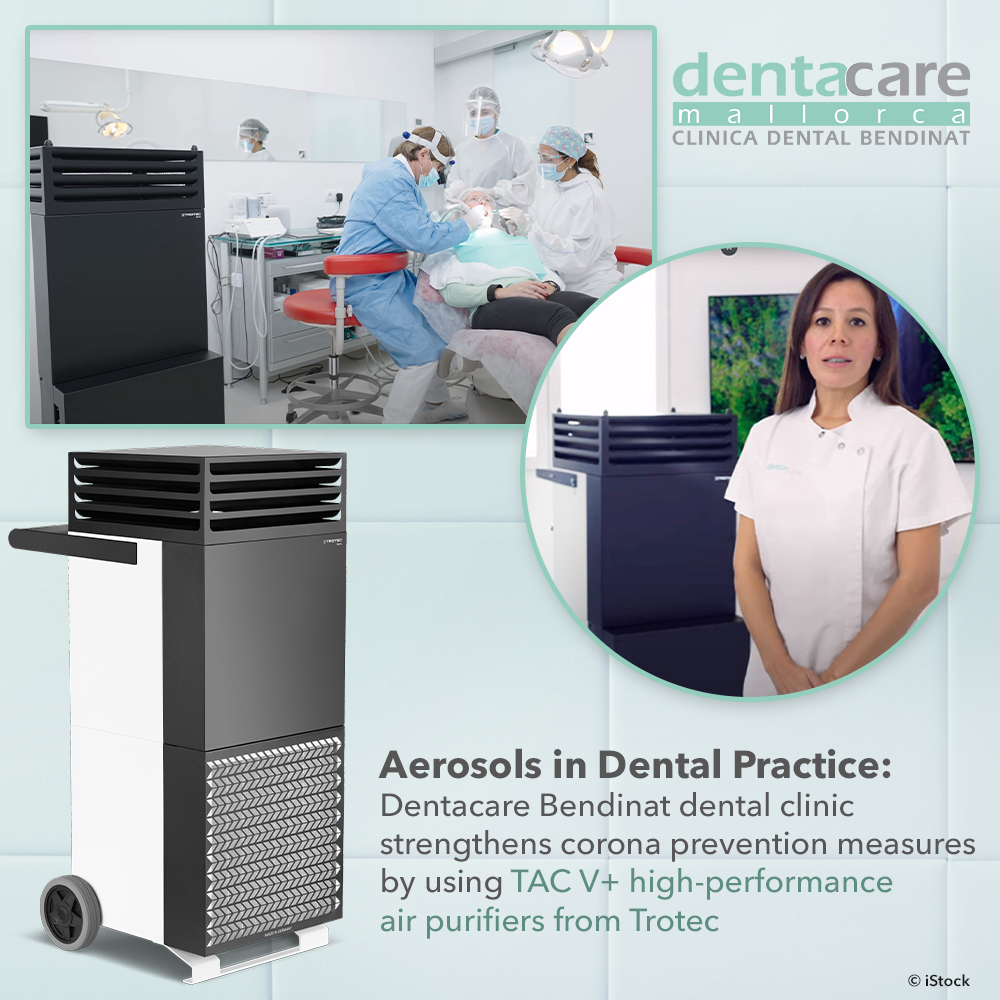 Dental surgeries are subject to strict hygiene regulations which contribute to a high level of protection in the practices. This has not just been the case since the corona pandemic. Even before that, dentists always had to expect that potentially infectious patients (e.g. with measles or HIV) would come to the practice for treatment. With the coronavirus SARS-CoV-2, a new potential risk is emerging that must also be taken into account when protecting the health of employees, patients and of course the practitioner.
Dental surgeries are subject to strict hygiene regulations which contribute to a high level of protection in the practices. This has not just been the case since the corona pandemic. Even before that, dentists always had to expect that potentially infectious patients (e.g. with measles or HIV) would come to the practice for treatment. With the coronavirus SARS-CoV-2, a new potential risk is emerging that must also be taken into account when protecting the health of employees, patients and of course the practitioner.
‘’Healthcare is an essential part of our daily work. As a dentist, I am particularly at risk. This has always been the case, but it has significantly increased yet again due to the corona virus’’, says Dr. Claudia Aguilar, who provides dental care for locals and tourists in the ‘’Dentacare Bendinat’’ practice in the centre of Mallorca.

The air in the practice is often polluted by high aerosol concentration
The air quality in a dental practice is not visible to the naked eye, but it is sometimes inside it. These are aerosols, which are produced, for example, during prophylaxis treatment, drilling, but also during surgical procedures. Such aerosols, according to the unanimous opinion of scientists, are responsible for around 80 percent of corona infections.
Aerosols are tiny (approx. 0.1-0.3 µm) and suspended particles that are invisible to the eye. They are produced when speaking and breathing, but also during dental treatments, for example through the spray mist from the cooling water of rotating instruments. In sick patients, these aerosols can contain and transport the SARS-CoV-2 virus – a transmission pathway that has long been known for tuberculosis infections for example. The Problem: Aerosol particles are so light due to their small size that they linger in the air for long periods of time and spread over several meters in the treatment room. Visors, masks and extraction systems protect against larger splashes and droplets that are inevitably produced during treatment. However, these aids do not protect against potentially infectious aerosols.
TAC V+ high-performance air purifiers filter airborne germs. The risk of a viral or bacterial infection is significantly reduced.
In order to reduce the comparatively high airborne risk of infection to a minimum, Claudia Aguilar has equipped the practice with TAC V+ high-performance air purifiers. ‘’The air purifier from Trotec makes me, my colleagues and assistants feel safe.’’, says Aguilar. Of course, she didn’t choose the Trotec device based on a gut feeling. When doctors make decisions, it is mostly based on scientifically proven facts and studies. Aguilar was impressed by a highly regarded study by the renowned aerosol expert Prof. Dr Christian Kähler, head of the Institute for Fluid Mechanics and Aerodynamics at the German University of the Federal Armed Forces in Munich. In countless tests and trials Kähler has proven that the risk of aerosol infection can be significantly reduced by using a suitable room air purifier with H14-HEPA filter technology (EN 1822-1). A mobile TAC V+ high-performance air purifier from the German manufacturer Trotec was used as a reference device.
In the following video, Dr. Aguilar explains how the room air purifier has proven itself practice:
No other technical solution reduces airborne viral load faster than a TAC V+ high-performance air purifier
In a treatment room of up to 80 m², the TAC V+ high-performance air purifier demonstrably halves the airborne viral load within 6 minutes. In smaller rooms such as the waiting area, aerosol concentration is halved after just 3 minutes.
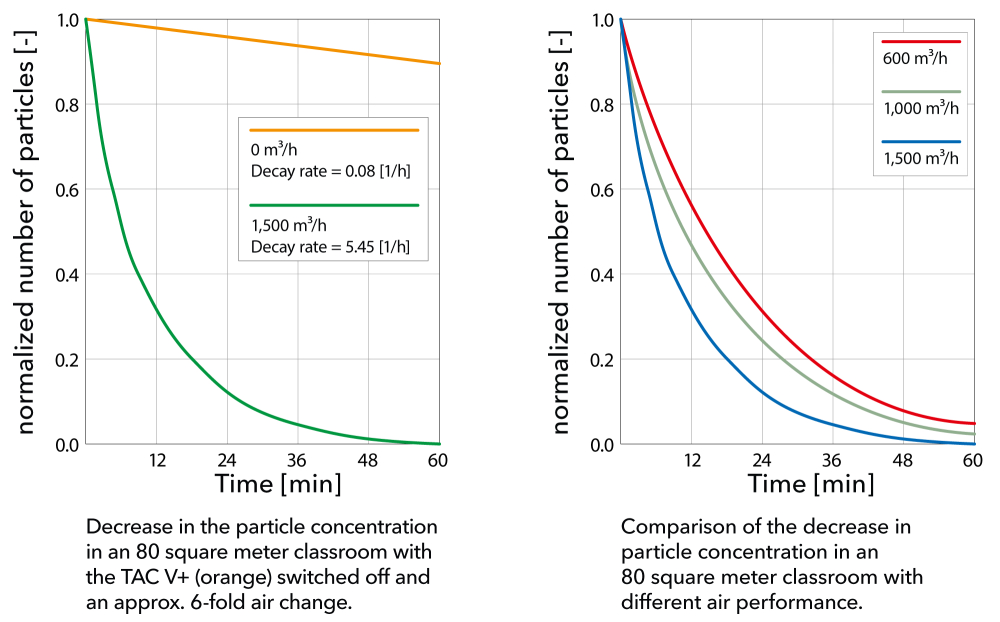
Studies from the University of the Armed Forces show that TAC V+ air purifiers significantly reduce the risk of indirect infection through aerosols. However, according to Kähler, it is important that room air purifiers meet certain requirements in terms of air performance and filter quality.
Air purifiers must meet three basic requirements for safe virus filtering:
- The volume flow of the air purifier must be sufficiently dimensioned to allow at least six air changes per hour. This is the only way to ensure that the aerosol concentration in the room is reduced within minutes. High performance air purifiers such as the TAC V+ even enable up to 16 air changes per hour and thus offer an even higher level of protection, for example for high-risk patients in medical practices, at hospital wards or in nursing homes.
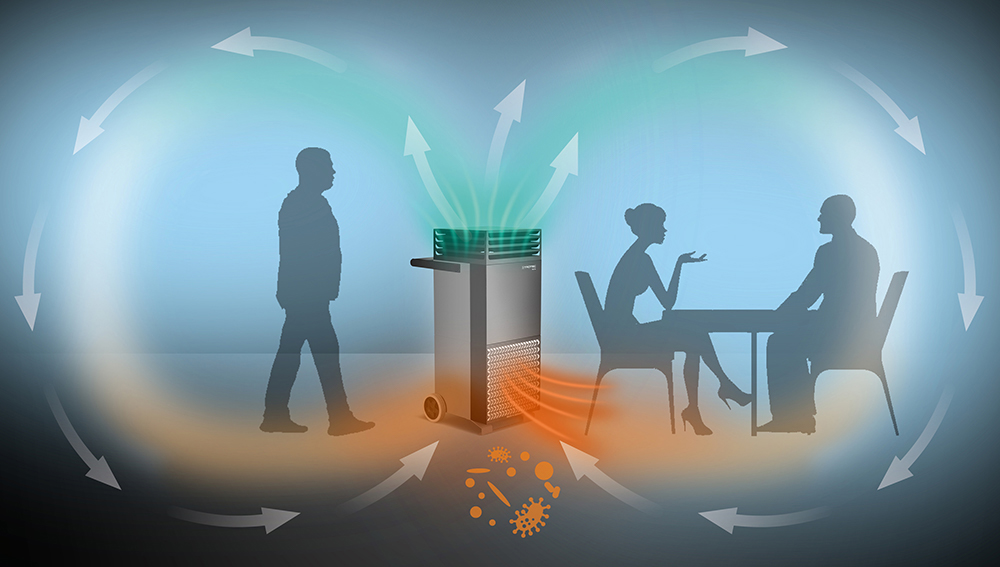
- The filter used must be certified according to DIN EN 1822. Only H14 HEPA high-performance filters certified according to EN 1822, such as those used in the TAC V+, can filter 99.995 % of small, virus-laden aerosols (0.1-0.3 µm) from the room air. This means that H14 HEPA filters already have a filter performance 10 times higher than H13 HEPA filters, whose filter performance is still comparably good in the size range of bacteria. However, there are significant differences in the so-called MPPS range (Most Penetrating Particle Size), i.e. when filtering out viruses and aerosols. Here, the Laboratory Technology Project Group (ELATEC) of the Federal Institute for Occupational Safety and Health expressly advises in its statement on the topic “Use of HEPA filters in ventilation systems (Resolution 16/2010)”: “The HEPA filter should correspond at least to class H14 according to DIN EN 1822-1.”

- The air purifier should be as quiet as possible so that it does not interfere with operation or teaching. Because if the noise is disturbing, there is a risk that the device will either be switched off or not be operated with the required air flow. Then there will no longer be a high level of safety against indirect SARS-CoV-2 infection. For this reason, the TAC V+ high performance air purifier has a noise-insulating sound-absorbing hood, making it the quietest unit of its performance class.
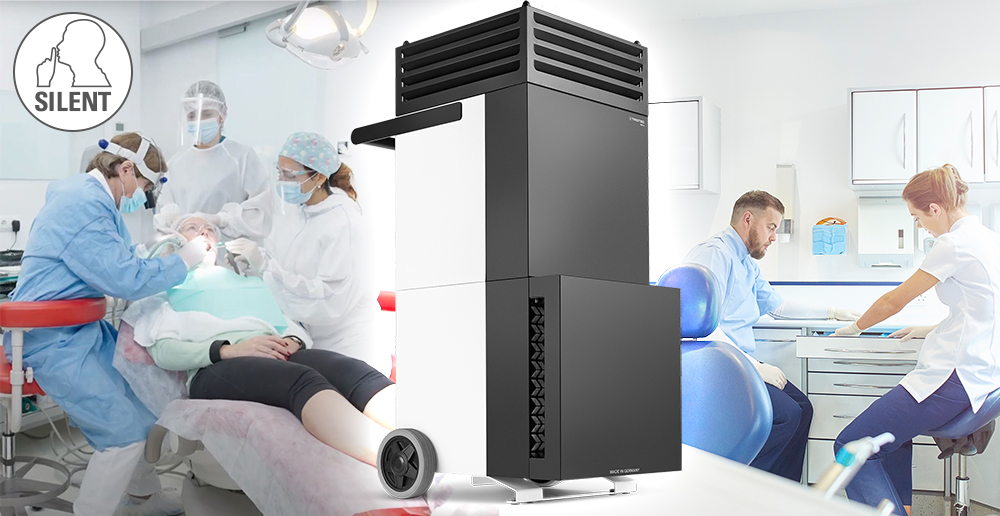
These criteria defined by Prof. Kähler are currently only exceeded by the mobile TAC V+ high performance air purifier. The device is developed and manufactured in Germany (Heinsberg), but it is delivered all over the world. A constantly updated overview on the company website, whereby restaurants, authorities, schools or medical institutions are already using the TAC V+ high-performance air purifier, underlines the proven effectiveness of the device.
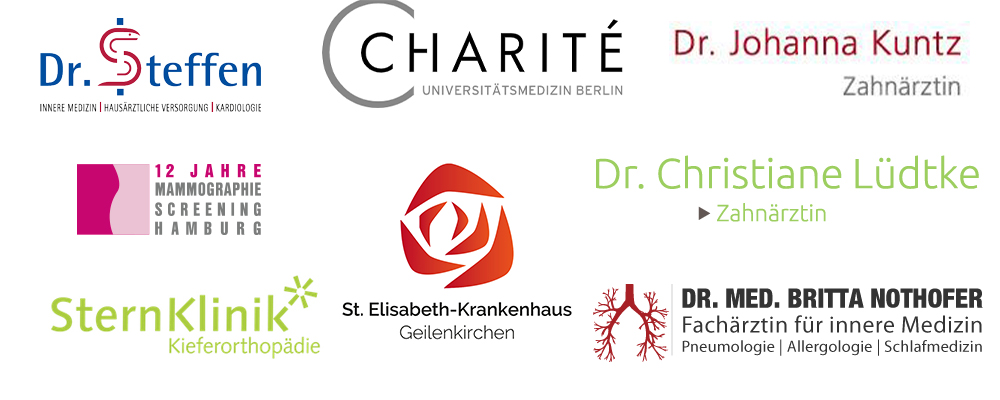
A safe investment in health and productivity
The TAC V+ high-performance air purifier enables a safe and uncomplicated return to normality in everyday life – despite Corona. The high performance air purifier can effectively protect against aerogenic infection with influenza viruses during the annually recurring waves of influenza too. The comparatively low investment costs are offset by the advantages of having the highest possible protection against infection.
I would leave out the ‘’colourful TAC V+ image’’ here. We have a video about it!
Please do not hesitate to contact us personally:
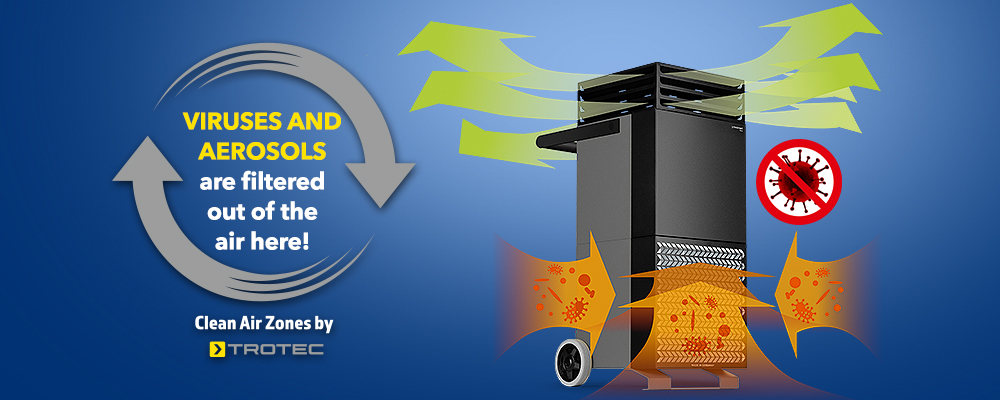
Trotec STORE
Grebbener Straße 7
52525 Heinsberg
Germany
Tel. +49 2452 962-400
E-Mail: store.heinsberg@trotec.com


